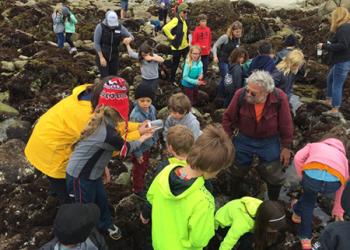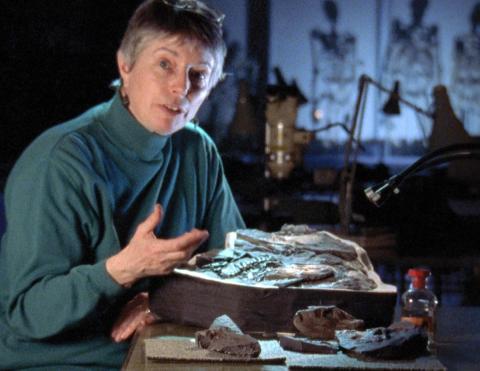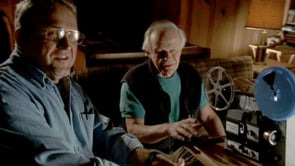
One of the really fascinating things about echinoderms is that they don't seem to grow old. They can live forever. The only thing that kills a sea star is physical harm or disease. Some sea stars can regenerate their whole body from one part of the ray. How do they do that? -- John Pearse
Biologist John Pearse has been studying echinoderms along the rugged coast of northern California for forty years. He long believed echinoderms were capable of basic behavior, but he didn't think they were capable of complex social interactions. They don't possess the seemingly necessary hardware, like a brain.
But after seeing underwater photographer Don Wobber's time-lapse films of sea stars, Pearse changed his mind. Wobber's footage showed sea stars wrestling with one another to dominate their food supplies on the ocean floor. These animals were certainly capable of leading active lives.
Later, filmmakers used a tiny camera embedded inside a mussel's shell to demonstrate how a sea star can exploit a tiny opening in a mussel shell to push its stomach inside. There the stomach can digest the creature right inside its own shell.
About John Pearse’s career
John Pearse, Ph.D. is Emeritus Professor of Biology, University of California, Santa Cruz, California (UCSC). He retired from UCSC in 1994, and continued to write and conduct research and science-related activities at the Joseph M. Long Marine Laboratory of the Institute of Marine Sciences until 2003 when he moved to Pacific Grove, near Stanford University’s Hopkins Marine Station when he completed his doctorate in 1964. Pearse, his wife, Vicki, and in-laws Ralph and Mildred Buchsbaum, revised the Buchsbaum’s Animals Without Backbones, and extended it into a larger volume, Living Invertebrates, which was published in 1987. Living Invertebrates proved an invaluable resource during the creation of The Shape of Life series.
Pearse's research focused on the reproductive ecology and photoperiodism of marine animals, in the Antarctic the tropics, as well as the central California coast. He still explores the rich and diverse intertidal habitats of central California. And he developed LiMPETs, a citizen science program to monitor the intertidal with high school students (see: limpetsmonitoring.org). After retiring Pearse was President of the California Academy of Sciences, the Western Society of Naturalists and the Society of Integrative and Comparative Biology, societies especially concerned with promoting student careers in organismic biology and natural history.
About Don Wobber’s career
The late Don Wobber, M.Sc. (1927-2014) had always been interested in the sea. As a youngster, he climbed the coastal rocks and explored the tide pools along the northern California coast, indulging in diving every chance he got. Wobber's passion for the sea was both artistic and academic. For over fifty years he dove for jade from which he created his sculptures. He took up underwater photography in the 1950s when he traded a jade stone for an underwater housing, which he converted to fit his 35 mm Leica M-3.
Wobber’s biology career began in 1968 when he sold his share of the family printing business and went back to university to study marine biology. He received a Master's degree from San Francisco State University. Wobber's master thesis, "Agonism in Asteroids", was published in Biological Bulletin in 1975, opening the door to future studies of echinoderm social behavior. That same year, Wobber went on extended trips to the Red Sea, Great Barrier Reef, New Zealand, and Samoa. In each location, he saw the same type of intraspecific sea star "bouting" behavior he had photographed beneath his home waters in Monterey, California.


















